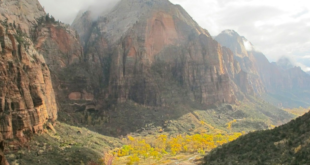
Probably one of the earliest of human wishes and the subject of endless endeavour is flight. More than the attendant romance to this possibility, it is the idea of utter freedom that makes flying so alluring and men have not slowed down in their quest to discover and use technology to make this dream come true. And he has, to some degree, successfully used his skill and knowledge by inventing the hot air balloon.
How these balloons rose to fame
What we have today in terms of modern balloon technology we owe to the Josef and Etienne Montgolfier of Annonay, France who flew the first successful hot air balloon in 1783, with animals onboard as passengers. As paper manufacturers, the brothers had initially noticed that ash rose with the flames when they burned paper. When animals survived the flight, it was decided that humans can safely go onboard.
King Louis XVI, also known as Marie Antoinette’s husband, declared that only condemned criminals should be allowed to man balloon flights. Two very brave men, Marquis Francois d'Arlandes and Pilatre de Rozier, a physicist, successfully lobbied to be allowed to participate in the first flight. Their balloons were made of cloth with hot air supplied by a grill.
The military connection
The earliest recorded use of hot air balloons were those employed during the Shu era by Chinese General Zhuge Liang, a distinguished administrator and strategist. His unmanned balloons, called Kongming lanterns, were used by the military as a means to exchange signals with their comrades.
Manned use for military purposes was done by the French during the Revolutionary wars when they used a hydrogen balloon to spy on the Austrian army in 1794. Balloons were also used by the Confederate army during the American civil war, although they were unsuccessful and incompetent enough to be captured by the Union.
How balloons rise
Today's balloons are almost similar to the ones flown during the early years, except that modern balloons use more durable and safer materials. Basically, a hot air balloon consists of the gondola, which carries the passengers and holds the heat source and the balloon or envelope which keeps the warm air contained. The cloth used for the balloon is usually made from nylon and the mouth closest to the flame is made from fire-resistant fabric.
A flying balloon is operated by partially inflating the envelope with cold air and then using propane burners to inflate the balloon through the opening or mouth. The heat source produces enough heat to create a difference in temperature between the air inside the balloon and the air surrounding it. When the air temperature inside the balloon is higher than the ambient air, it becomes lighter and rises, carrying its gondola and passengers with it.
The altitude a balloon can reach depends on the difference between the temperature inside the envelope and the surrounding air. Theoretically, the higher the temperature difference (with the inside envelope temperature higher than the ambient air), the higher the balloon will go. However, increase in temperature can cause faster degradation of nylon so internal temperature is limited to 250 degrees Fahrenheit.
Why hot air balloons are so popular
Modern use of flying balloons is primarily recreational, although they are also used for other purposes, for example, as methods of transportation for scientific studies involving tree canopies and animal life at higher altitudes.
Hot air balloons have continued to attract new enthusiasts because they are relatively simple to operate and are provide an exhilarating experience coupled with spectacular views. They are also relatively smooth and quiet, aside from the sound of occasional bursts from propane burners.
Sport balloon highs
The highest altitude ever achieved on a balloon was made by Vijaypat Singhania of Bombay, India, reaching 69,852 feet on November 26, 2005. He broke the previous record set by Per Lindstrand by 4,872 feet.
The farthest flight ever completed on a hot air balloon was made by the Virgin Pacific Flyer when Per Lindstrand and Richard Branson of U.K. flew to Northern Canada from Japan. They covered 7,671.91 km. on January 15, 1991.
The longest flight duration was clocked at 50 hours and 38 minutes. Two Japanese, Hirosuke Tekezawa and Michio Kanda completed this flight on January 2, 1997.
The largest balloon ever built was measured at 2,600,000 cubic feet and was used during the Virgin Pacific Flyer record-setting flight. The manned flight also recorded the highest ground speed at 394 km per hour.









Join the Discussion
Type out your comment here:
You must be logged in to post a comment.